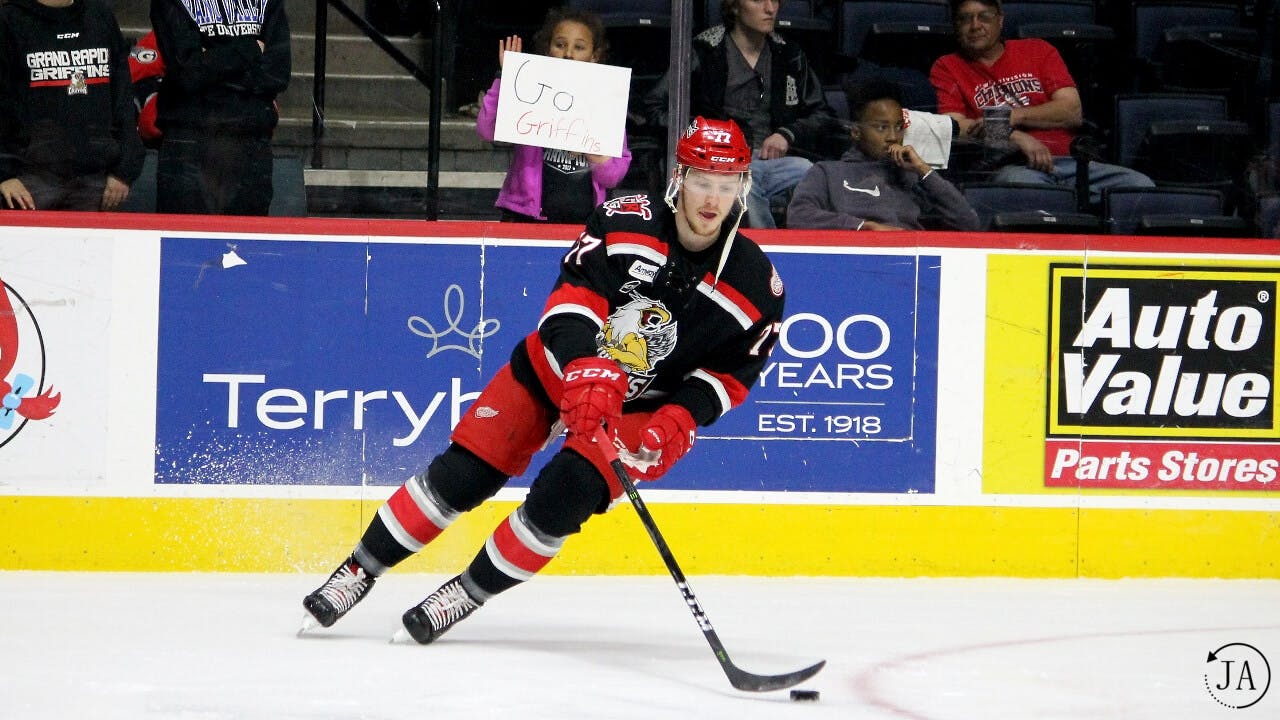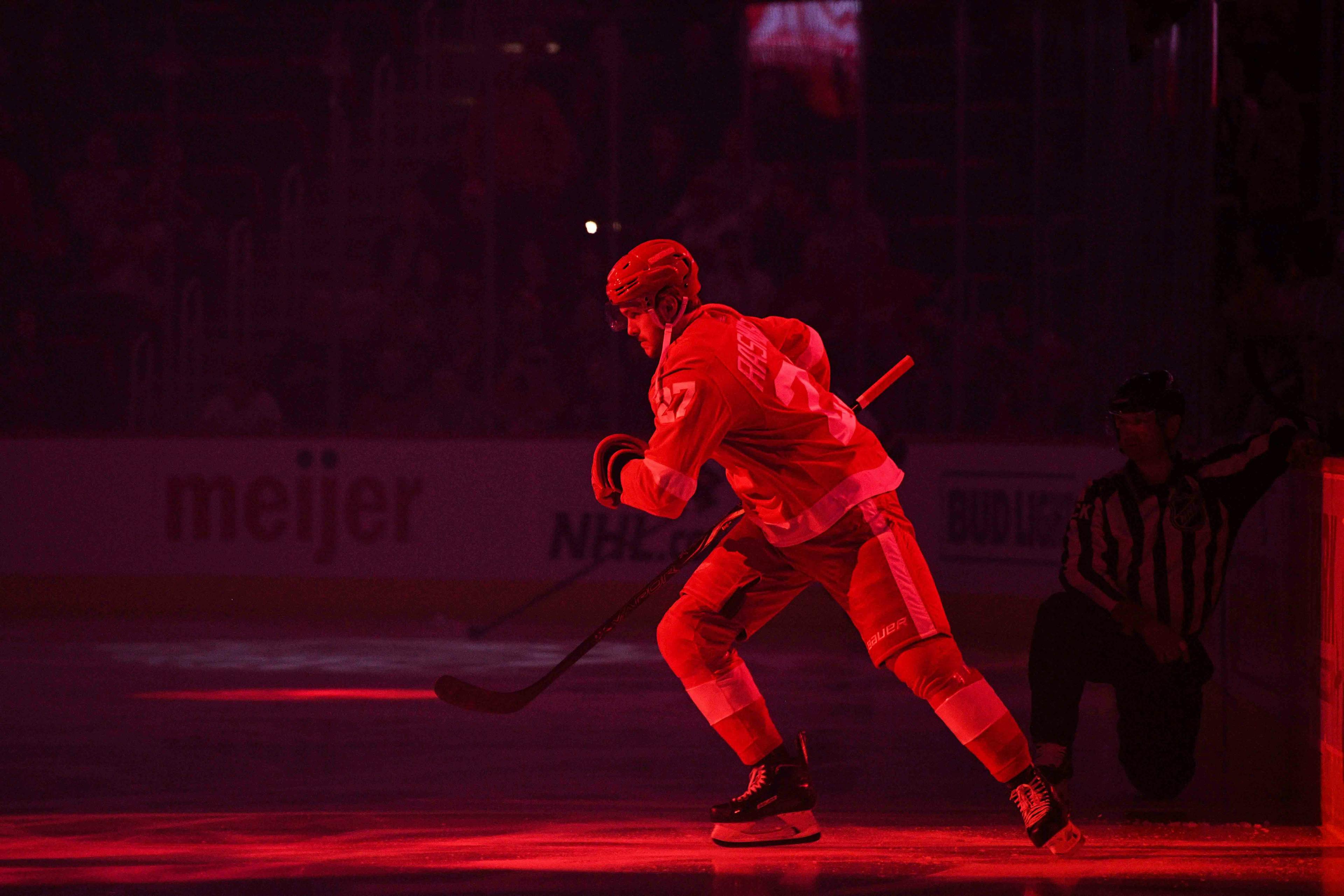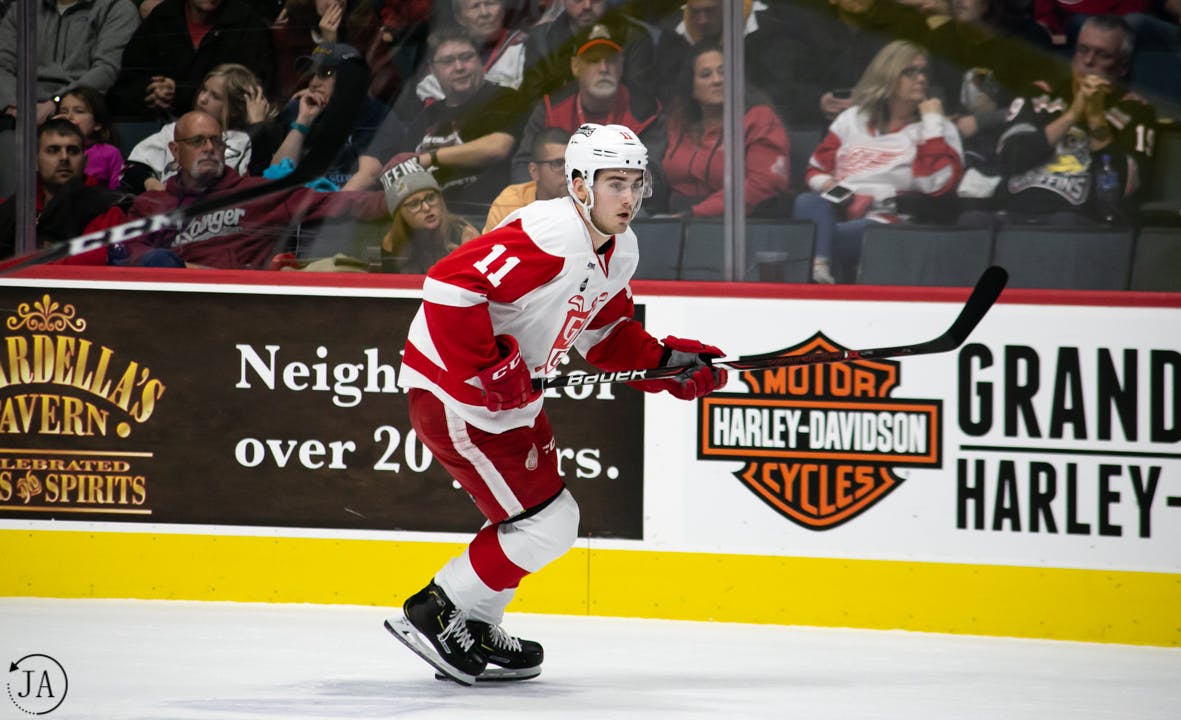Five Questions About Five First Rounders in Grand Rapids

By Tony Ferrari
4 years agoThe Grand Rapids Griffins will be fun to watch. They also look like they will be one of the strongest teams in the American Hockey League (AHL). The keys to that future success are the five first-round draft picks of the Detroit Red Wings, all since the 2015 draft. Evgeny Svechnikov is the elder of the group at just 22 years of age, while German defenseman Moritz Seider is the youngster, starting the season at just 18. The youth and high-end skill that the Griffins have on their roster to start the year is as enticing as any other AHL club. Each of the young players on the Griffins face their own challenges and questions. The fact of the matter is that they are all 18-22 years of age and playing professional hockey, albeit at a step below the NHL, and that comes with adjustments, struggles, and growth.

Will Evgeny Svechnikov’s Knee Bounce Back?
After suffering a torn ACL in last years preseason, Svechnikov didn’t play a single game in 2018-19. He underwent successful surgery to reconstruct the ligament on October 16th, 2018 which puts him at just about a year out. He looked good in the preseason but has said that he doesn’t feel 100% yet.
“Not even close, I don’t feel like myself out there yet. It’s tough. It’s not easy. I just have to go through it and push myself.” said Svechnikov to Ted Kulfan of the Detroit News.
With that said, the advancements in medical procedures, particularly ligament reconstruction, have advanced leaps and bounds in the last decade. NFL players are back on the field and making violent cuts and changes of direction with hard stops within a year. Although ACL tears aren’t nearly as common in the NHL as they are in the NFL, the progress made in the field is a good thing for Svechnikov.
Svechnikov may not be 100% as of yet but he is on the ice, practicing and developing. He is playing games and dealing with the pain at the moment, which means that the knee is at least healed enough that the team and the doctors feel comfortable with it. He may never get back to 100% of what he could have been prior to his draft year, but he already looks well on his way to developing into a good middle-six forward.
Svechnikov will likely be with the Griffins for a limited amount of time, seemingly destined for the Red Wings from the outset of training camp and his performance did nothing to hinder that. He’ll need to give himself time and allow the knee to find it’s new normal while he works his way back to the NHL.
What is Michael Rasmussen?
This may seem like a broad question but there are a lot of varying opinions on what Michael Rasmussen can develop into. Some believe that he can develop into a top-line power forward if everything goes right. Others believe that he will only top out as a third-line, power-play net-front presence. The reality is that he will land somewhere in between.

Michael Rasmussen will join the Grand Rapids Griffins this season. The power forward was the victim of the NHL-CHL agreement last year (Tim Fuller-USA TODAY Sports).
Unfortunately for Rasmussen, because he was just 19 he was stuck on the NHL roster last season.. Due to the NHL-CHL agreement he was unable to play in the AHL, but was deemed to be wasting his time and development in the WHL. While allowing him to toil away in the Red Wings bottom-six and only averaging 12:04 minutes per game could be seen as more negative than dominating the WHL for an additional year. The Red Wings made their bed with Rasmussen and now they have to lay in it.
He needs to develop his skating further and needs to play top-six minutes. That opportunity will come in Grand Rapids. Rasmussen will also need to show that the year of stagnation in the NHL isn’t going to affect his long-term outlook and begin to show progress as a full-time top-six player. He needs to prove to be more than just a net-front presence.
Is Joe Veleno legit?
Joe Veleno is an interesting case. He played four seasons in the QMJHL after being granted exceptional status in 2015. Due to that fact, he is a rare 19-year-old from the CHL permitted to play at the AHL level. This is a huge advantage for the Red Wings as Veleno was clearly done with junior hockey after leading the league with 1.76 points-per-game and 104 points overall.
Veleno, who was the star of the prospect tournament, flashed brilliance for stretches in the preseason. He was also on the wrong side of the puck at times. He finished the preseason with a 37.31 CF% and a 42.95% xGF% which were both a tad underwhelming. It was a small sample size but Veleno played the sixth-most total minutes during the preseason amongst all Red Wings players. The underlying numbers don’t bode well for Veleno’s preseason, but the flashes were well worth the price of admission.
Veleno has the skill and speed to play in the NHL. Sub-par teammates and deployment (~35% offensive zone start percentage) could very well be to blame for the poor on-ice metrics. That’s why it’s intriguing to see the 2018 30th overall pick play in the AHL this upcoming season. He will be the number one center to start the year with Filip Zadina on his wing. They will look to form one of the most dangerous duos in the AHL, which will go a long way in figuring out if Veleno is ready to play professional hockey at just 19.
Can Filip Zadina Dominate the AHL?
While many felt that Zadina had a rough first professional season in the AHL last year, he had the 15th highest points-per-game (.593) of a 19-year-old in the AHL since the 2004-05 lockout. Before people pile on about that being an odd cut-off point, prior to the lockout many teams didn’t use their AHL squad for development, rather, they were often low skill teams that were able to be run by high skilled prospects. They used to use them as a taxi squad of veterans to call-up when needed. Zadina may not have blown the AHL away last year, but there was some very good offensive play and growth overall throughout the year.
The offensively dynamic forward was maligned in the preseason and at the prospect tournament for his lack of counting stats but the skills were evident. He seemed to be snake bitten with a low PDO (0.935), and an unusually high number of defensive zone starts in comparison to offensive zone starts like many young offensive players are afforded. He started in the defensive zone more than twice the amount that he started in the offensive zone, which is a formula for disaster for a young player known to be an offensive play driver. While Zadina clearly needs to improve defensively, putting him in a position to succeed is key to his development and success.

This season, as a 19-year-old that will turn 20 at the end of November, Zadina will be one of the primary offensive forces on a team looking to compete for the Calder Cup. He will almost certainly play on the top-line centered by Veleno, building chemistry with the fellow young gun. He will get power-play time and every opportunity to be ‘The Guy’. He has all the tools to be a dominant offensive force, so it’s just a matter of Zadina putting it all together.
Was North America the Right Decision for Moritz Seider?
The options were vast for the Red Wings top pick in June’s draft. Seider could have played for Alder Mannheim and help defend their DEL title, but the Wings would have little-to-no say in anything developmentally for the next year. He could move to a higher quality European league such as the SHL, but the same distance and control issues arise. Seider could have also gone to the OHL where his rights are owned by Owen Sound, but that seems like a large step back from professional hockey against men in Germany. That left two options, the NHL or the AHL.
The NHL is a massive jump for Seider, despite how proficient he looked in preseason. He clearly has a variety of NHL tools such as his skating and IQ. However, he seems a little hesitant offensively, which is an area of his game that is very raw but bursting with potential. While some question his offensive upside, he showed flashes of offensive prowess at times last year in the DEL and then showed beautifully again at the World Championships. His defensive game is mature and efficient. He uses a good stick and high-level skating to stay in front of attacking players and disrupt their momentum.
Failed to load video.
The AHL will do Seider good, allowing him to continue developing his offensive game and adjust to life in North America. The Red Wings development staff will have easy accessibility to Seider, developing a relationship with one of the most important players in the organization. Shawn Horcoff and Dan Cleary will be able to work with Seider on a regular basis, ensuring that the defender’s developmental needs are met. He should play top-four minutes, likely top-pair, and could possibly be a call-up candidate at some point this season.
The Griffins look to be a true contender in the AHL and if those projections come to fruition, it will be on the backs of the five players in the photo above. Micheal Rasmussen, Evgeny Svechnikov, Filip Zadina, Moritz Seider and Joe Veleno. The “Griffin Five” if you will. This has the potential to be a special group going into the future of the Red Wings franchise. A youthful injection that helps let the past die. A step towards the Larkin-Seider Era. Or maybe it’s the Larkin-Zadina Era? Larkin-Veleno? With a little patience, we may just find out.
All advanced stats via Natural Stat Trick
Recent articles from Tony Ferrari





